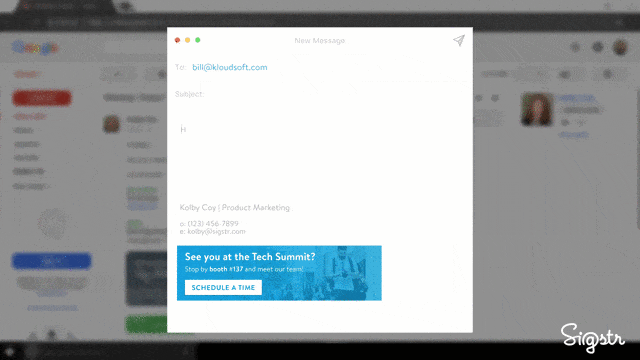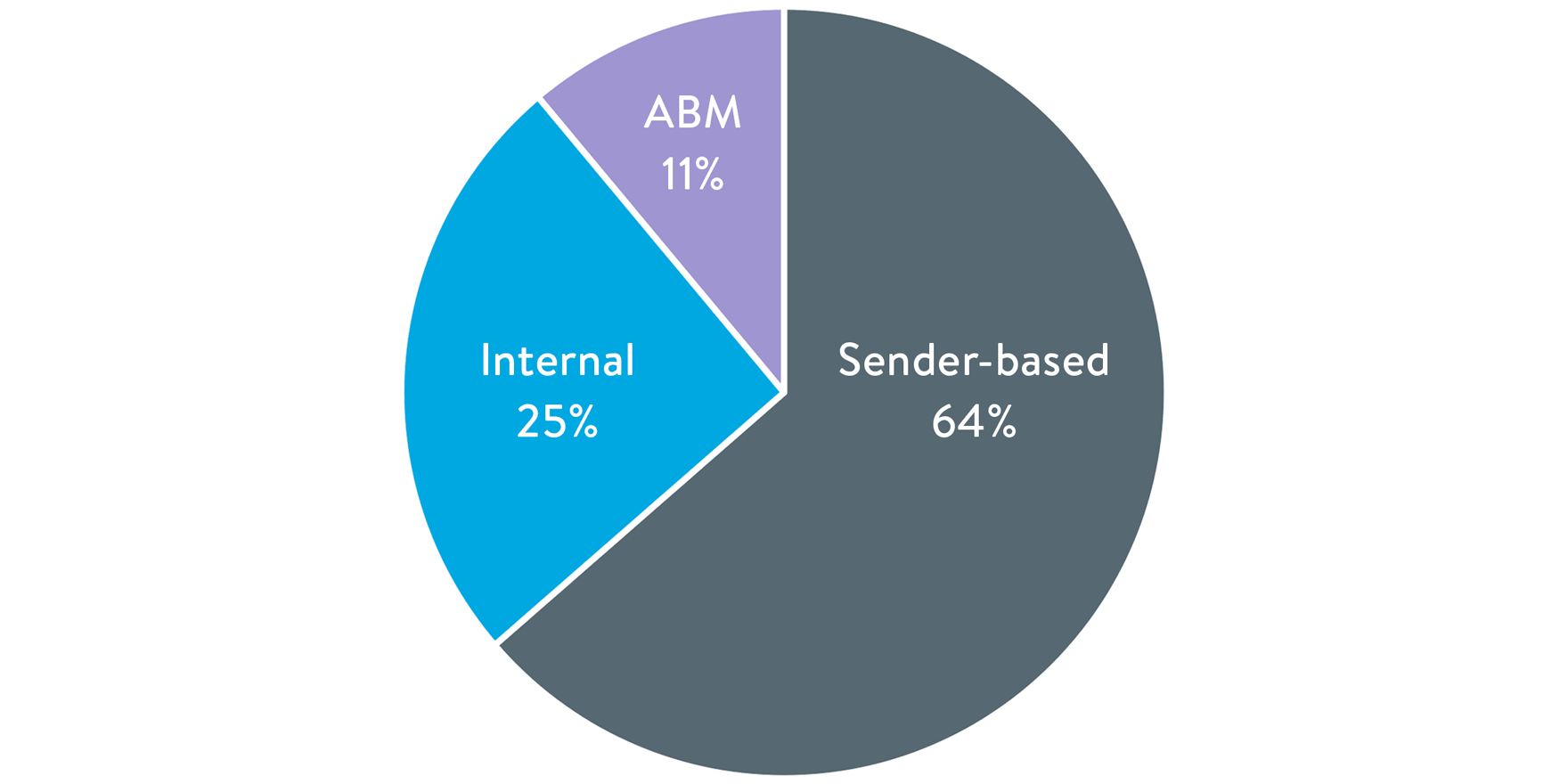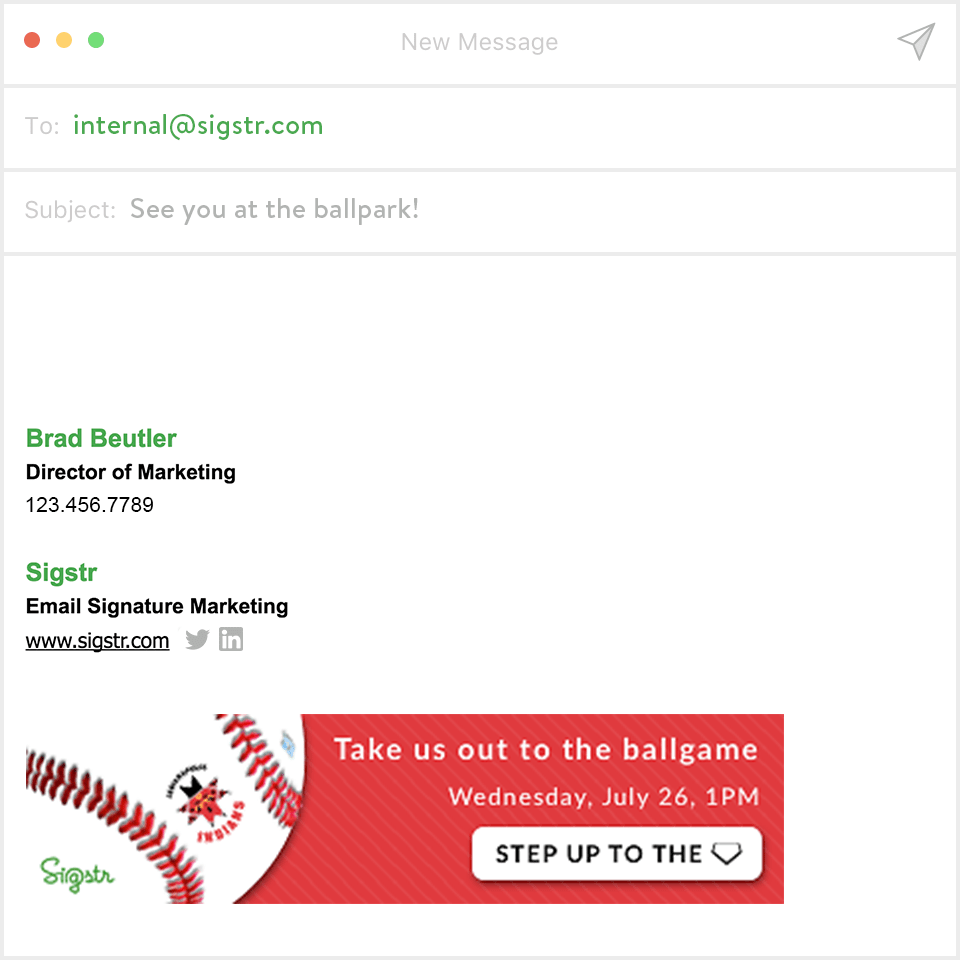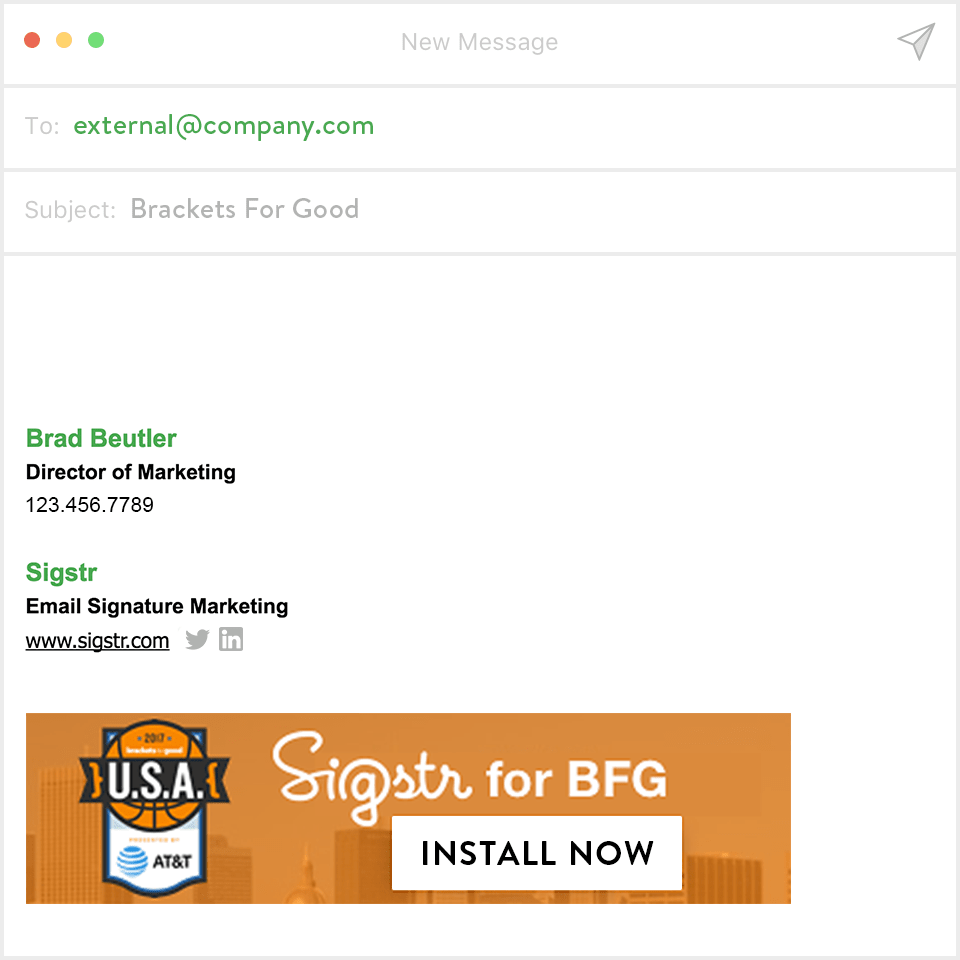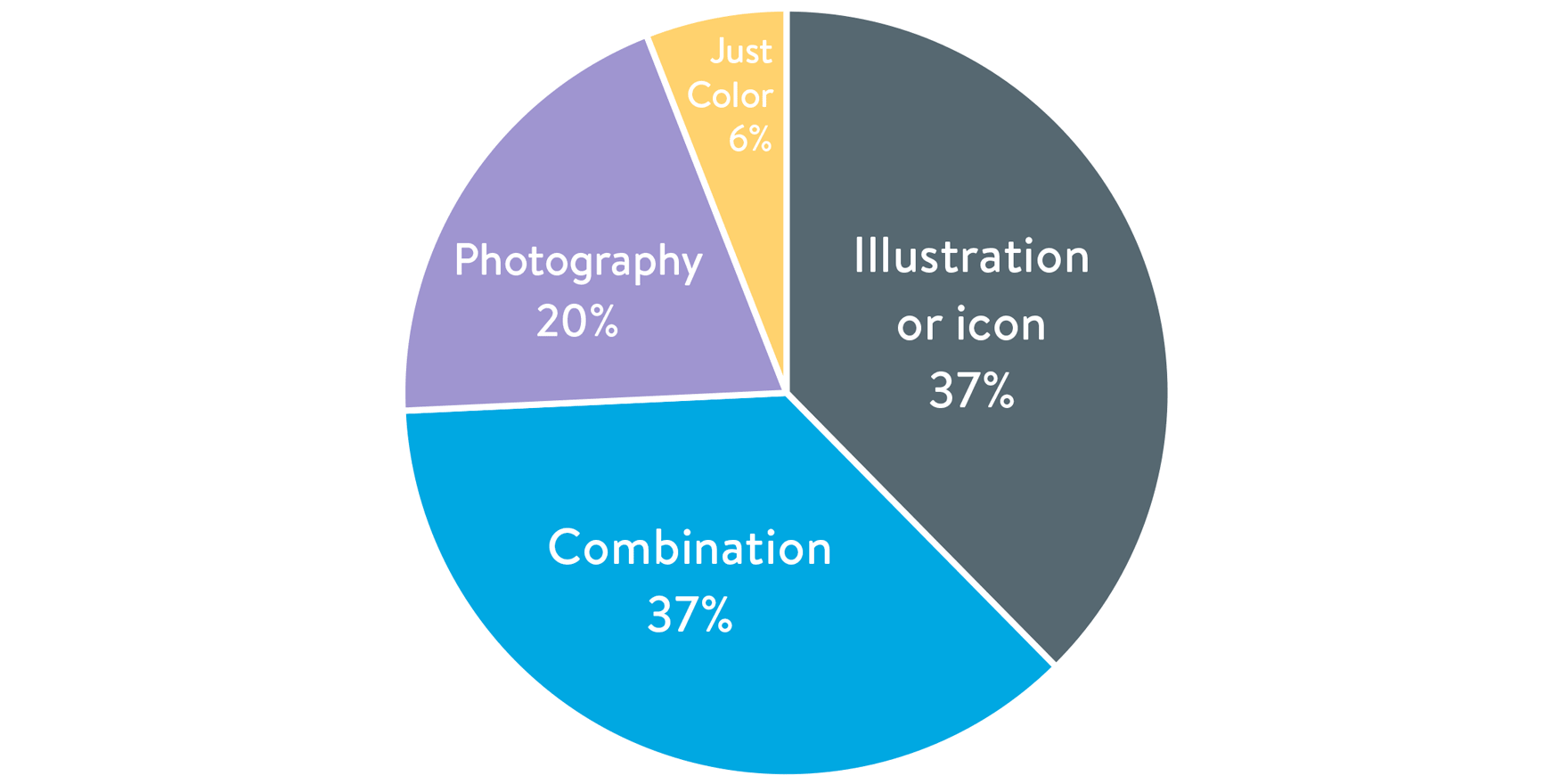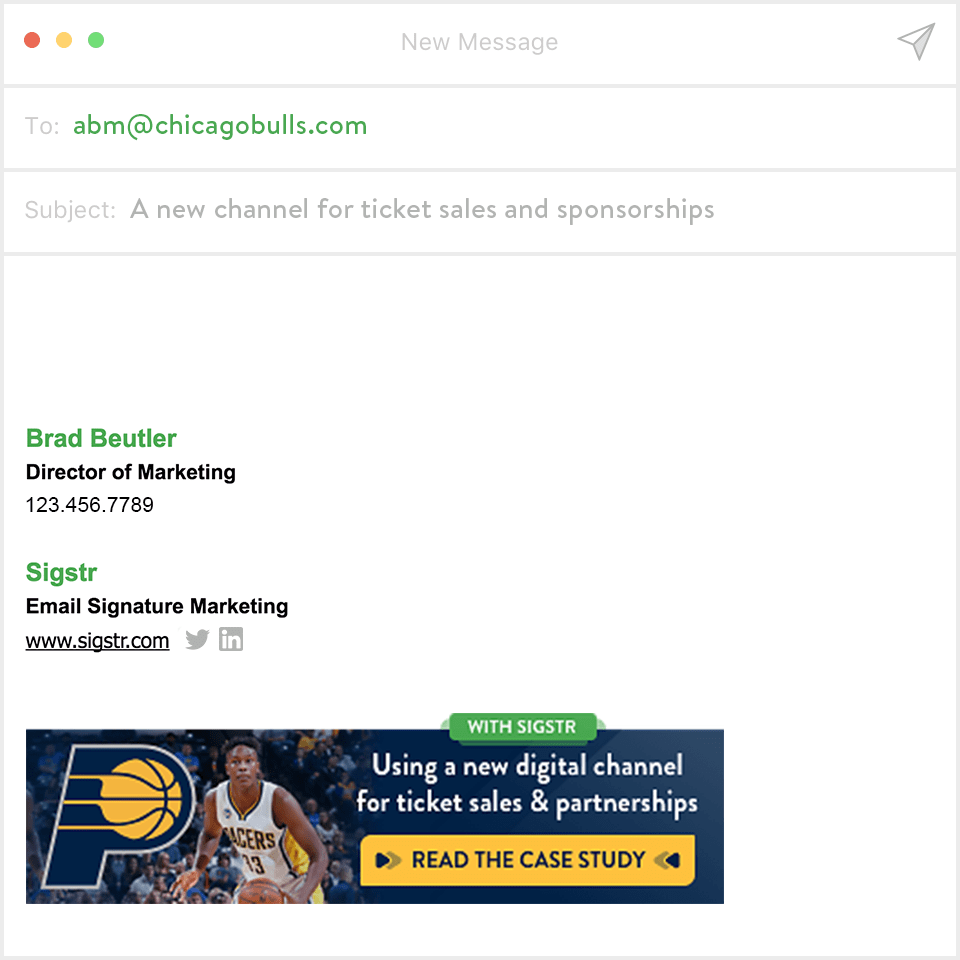At this point, Sigstr has been included in several hundred million emails, so our team has learned a lot about email signature marketing. This small slice of digital real estate has become the most targeted and authentic marketing channel for almost 400 brands. Where else do you have the opportunity to see how your most important contacts, customers, and prospects are interacting with your content within everyday 1:1 interactions? Employee email provides a wealth of data and knowledge that can help all of us be better marketers and shape strategies for other channels, campaigns, and designs.
With this in mind, our team went back and analyzed every email signature marketing campaign that Sigstr launched in 2017. Here’s what we learned:
1. Targeting specific audiences with relevant content is important (internal education for the win!)
As a refresher, Sigstr offers three different targeting options for your email signature marketing campaigns:
Sender-based: Organize your employees by department or geographic location so you can assign specific content to each group (for example, Marketing can promote an upcoming webinar while Customer Success promotes a product release).
Internal: Email recipients with your company’s domain can receive internal campaigns, while those who don’t see only external content. This gives you the ability to rally employee engagement with initiatives like open enrollment, employee recognition, upcoming company events, and more.
Account-based marketing: Sigstr’s ABM functionality allows marketers to deliver 1:1 targeted content to specific contacts, accounts, industries, and regions. For example, assign a sports franchises recipient list to a NBA case study campaign.
We used all three targeting strategies throughout the 2017 year, with sender-based campaigns leading the way.
Although sender-based proved to be the most common, internal campaigns performed the best (in terms of average click-through-rate) as we used them for upcoming company outings and culture. Here’s our favorite internal campaign from last year:
2. From events to recruitment, there are many use cases for email signature marketing
In the coming weeks, we’ll be releasing the “State of Email Signature Marketing” report that analyzed 1,000+ campaigns from the 2017 year. We looked at data points and trends like prominent color, dimensions, targeting, visual elements, and specific use cases. Across those 1,000+ customer campaigns, we tallied 27 different use cases for email signature marketing. TA-WEN-TY SEV-EN! That’s incredible.
We counted 17 different specific use cases from our own account, which we organized into these main categories.
- Events (conference or trade show, podcast, webinar)
- Customer (review or rating)
- Company (award or recognition, new website, news or press, brand, recruitment or culture)
- Resource (blog, infographic, ebook or case study, video)
- Product (services or offerings, request a demo)
- Other (partner or referral program, philanthropy, fundraising or donation)
Here’s a breakdown of our most popular use cases from 2017:
3. Employee email is a powerful marketing channel for philanthropy and nonprofits
Of the specific use cases listed above, philanthropy scored one of the highest engagement rates. And we’re not the only ones to see success! We were excited and proud to share the Herff Jones story earlier this month, which shows how they achieved a 300% ROI and helped plant 80+ trees in Africa (all within 2 months after launching Sigstr). CrowdRise also agrees, as said best by their Director of Marketing, Gary Wohlfeill.
“That seemingly slight space at the tail-end of your email, if treated correctly, has the opportunity to be a real powerhouse for your nonprofit.”
4. We love the color green (big surprise there), but we see high engagement when experimenting with other campaign colors
Across the 70+ campaigns we launched in 2017, we analyzed the one prominent color used for each banner. By a landslide, green was the winner at 56%. And grey took home the silver medal (how ironic) at 18%.
Green may have been our most popular choice, but orange performed the best. We’re okay with this considering the fact green goes well with orange (woohoo St. Patrick’s Day is only 45 days away)!
5. Eye-tracking tests say CTA buttons matter, but our data tells us otherwise
We recently published an ebook that includes eye-tracking analysis and tests around dozens of different email signature examples. And within this analysis, attention maps and hot spots were used to show us which elements capture the most attention. Multiple tests revealed red hot areas around a clearly defined call-to-action (such as a button), so we thought our click data would tell the same story.
73% of our campaigns included a call-to-action button, yet these banners collectively had the exact same engagement rate as those without one. CTA button or not, it’s still important to include language that encourages the email recipient to take action. Request a demo, meet up with us, download now, and register here are a few of our favorites.
6. Be mindful of specific campaign design elements (like photography)
We also analyzed the different elements incorporated into our campaign designs, whether it be icons, photography, just color, or a combination of all the above.
While “illustration or icon” and “combination” proved to be the most popular, we saw the most engagement with photography. In addition to our account, photography was also declared the winner (in terms of click-through-rate) after analyzing 1,000+ campaigns from our customers. Here’s an example of what this might look like:
7. Account-based marketing and employee email is a powerful duo
At this point, you may be wondering, “what was Sigstr’s most successful email signature marketing campaign in 2017?” Well, we’re glad you asked!
When targeting specific audiences or verticals, good things tend to happen and engagement rates go up. This campaign was no exception, as we created a “Sports franchises” recipient list (think Cubs, Cowboys, Lakers, Red Wings, etc.) and paired it with the campaign banner below. What better way to show the sports industry how Sigstr can deliver value to their team than showing how we did it for the Indiana Pacers?
8. Email signature marketing and Sales Dev teams are BFFs
Remember…you can mix and match content with specific sender groups (see #1 for more). And across our 8 sender groups, the Sales Dev group collectively saw the highest engagement. Chances are, your sales team members are sending out the most external-facing email, so this is great news. Campaign banners in SDR’s email signatures (something that is included in every single one of their outreach emails) can serve as a subtle, yet effective, way to lead prospects to the next stage. Requesting a demo, signing up for a free trial, reading a relevant resource, etc.
Added bonus: if you’re looking to scale your email outreach (while keeping it personable, empathetic, and customer-centric), our good friends at SalesLoft can help. And they integrate directly with Sigstr, so you can easily amplify the success of outreach email and email signature marketing together.
9. Consistent activity and fresh content is key
We launched 71 total email signature campaigns in 2017. That boils down to about 6 a month or 1.5 per week. Consistent activity is important because engagement rates may diminish the longer a campaign runs. With that said, we recommend switching or launching a new campaign every 2 weeks. If you’re worried about your content supply keeping pace with this rotation, multiple variations of a campaign (that promote the same resource) can extend its shelf life.
Our goal here at Sigstr is to be a helpful and trusted resource as more and more teams embark on the email signature marketing journey. We want to be transparent and openly share what we have learned from our own campaigns. This post was intended to do just that (while also inspiring you with design ideas and entertaining you with “dad joke” humor).
Whether you’re a seasoned veteran or newbie, we’re always here to help and collaborate. Let us know what your team has learned from email signature marketing by tweeting @SigstrApp! And stay tuned for more trends, data, and best practices in our upcoming “The State of Email Signature Marketing” report.
